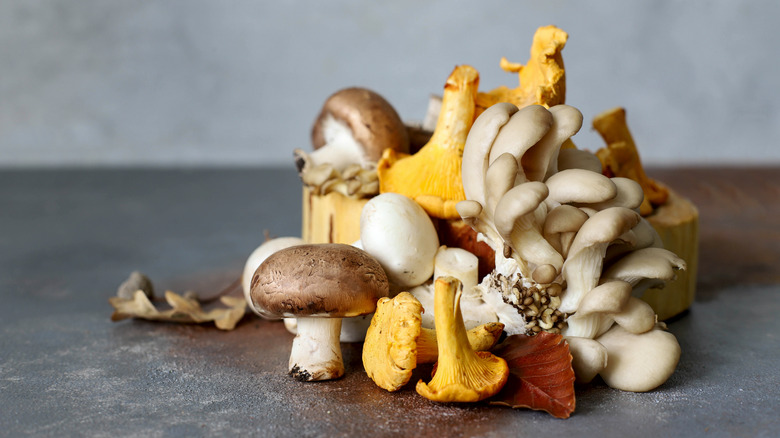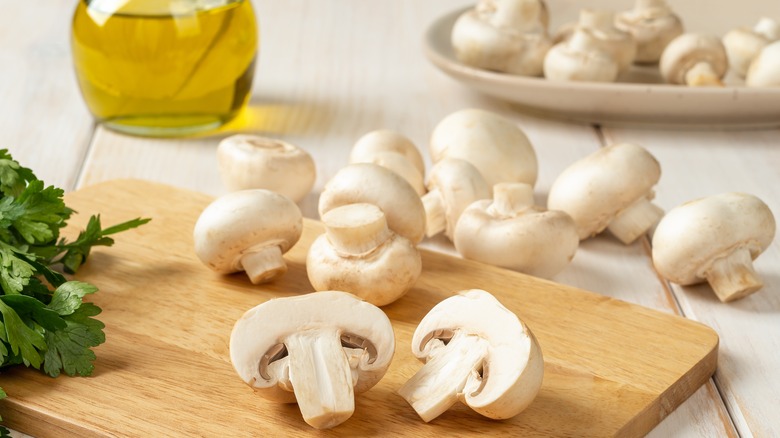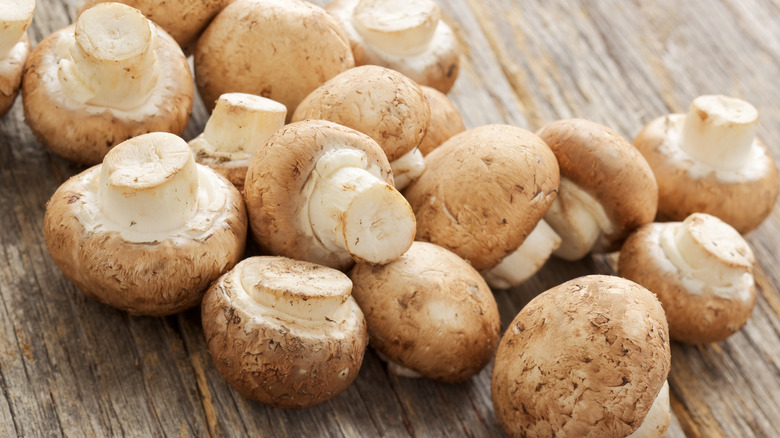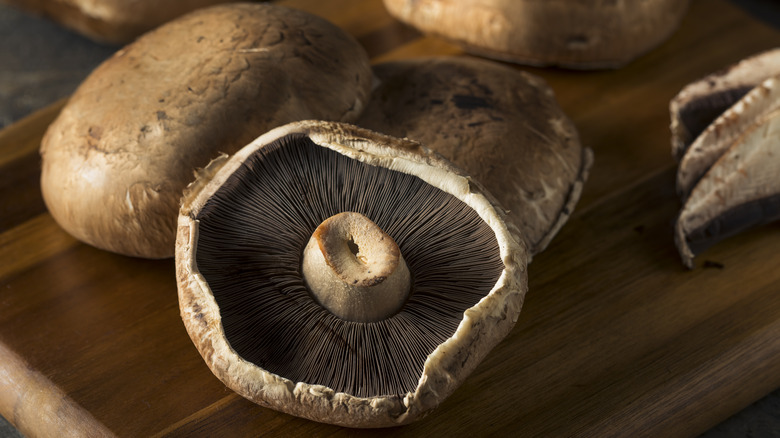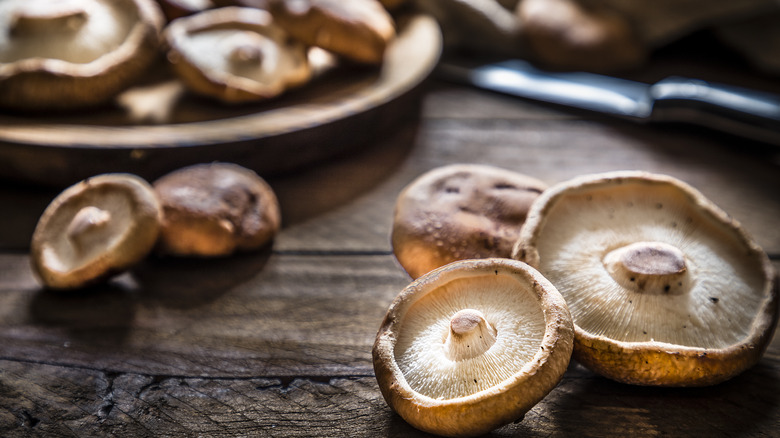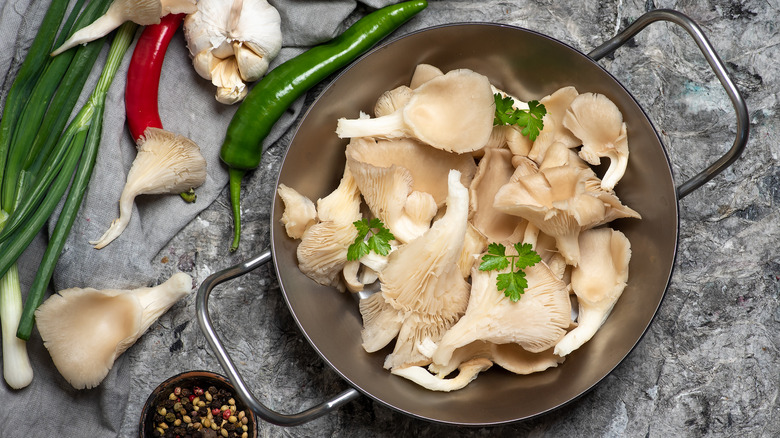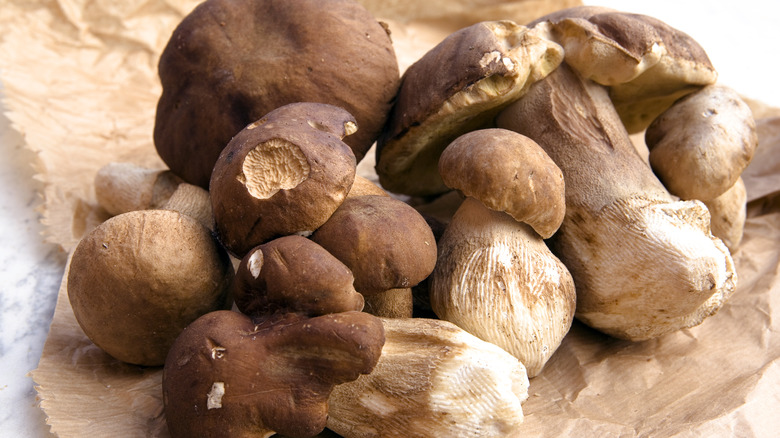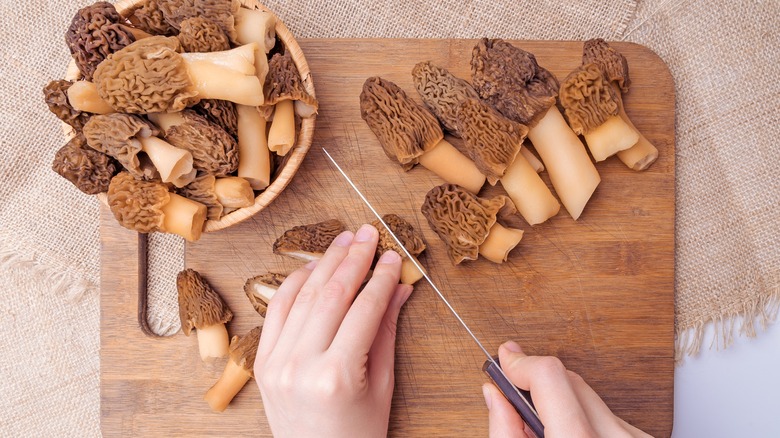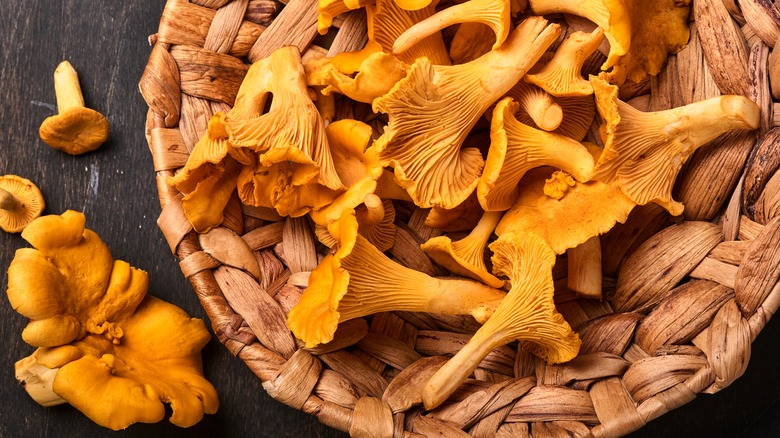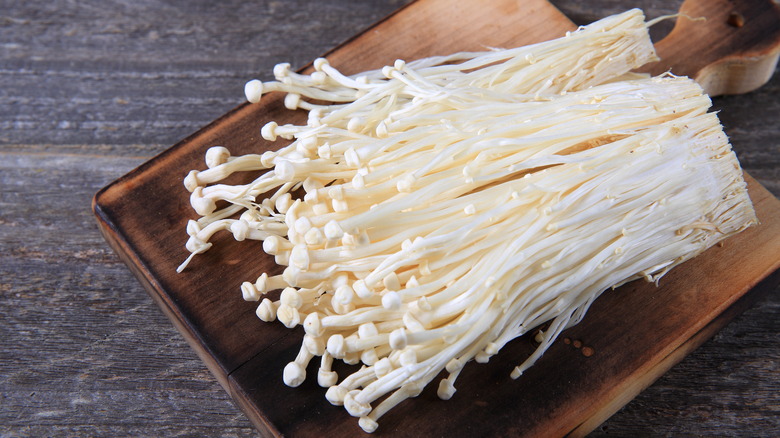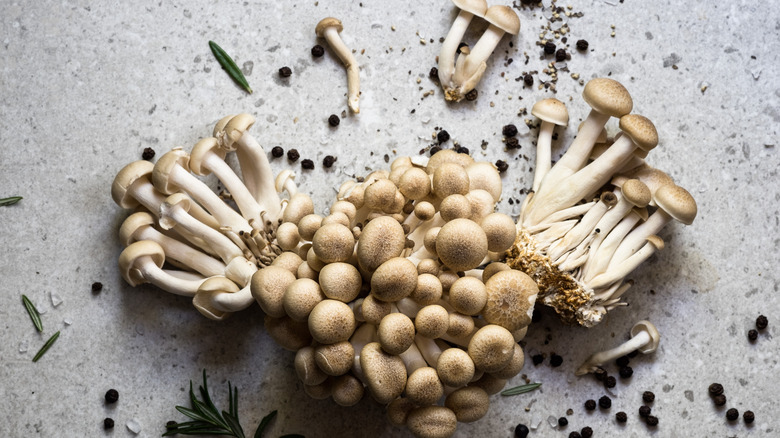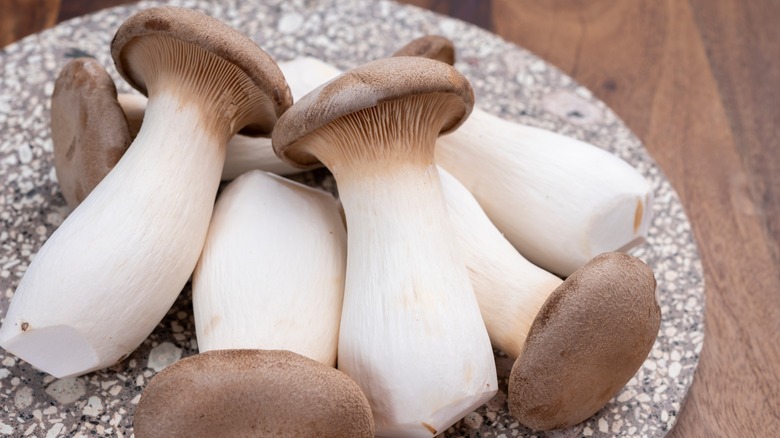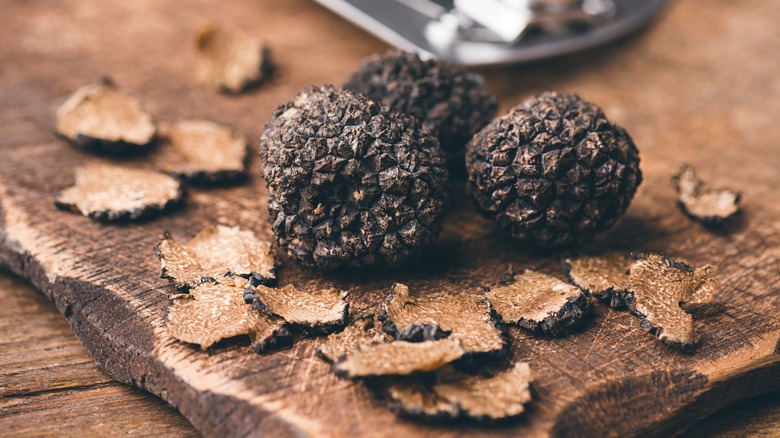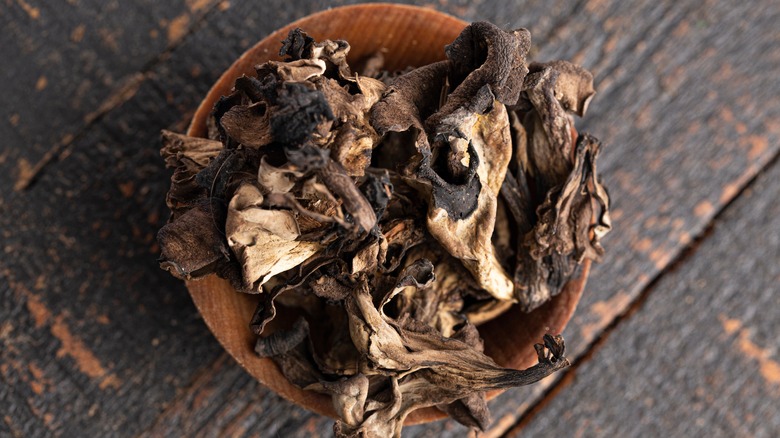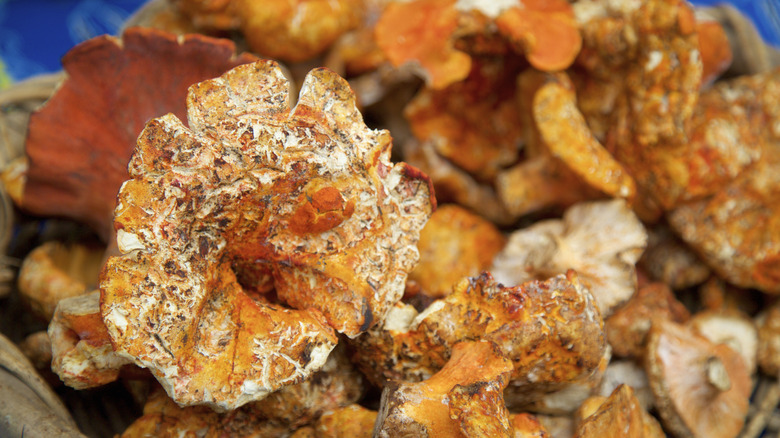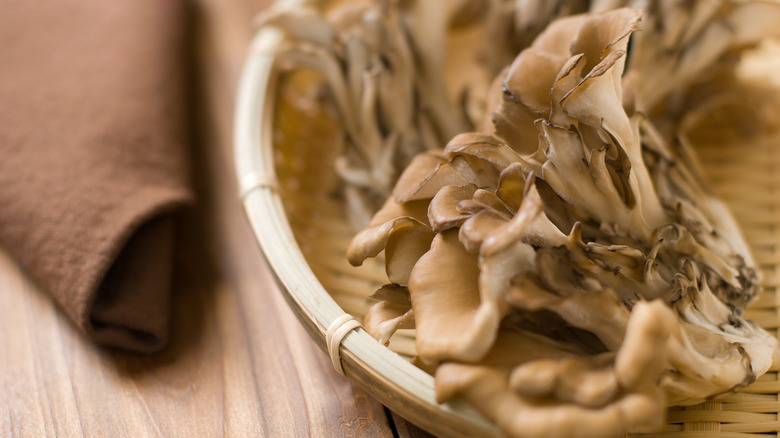15 Types Of Mushrooms & What To Cook With Them
We may receive a commission on purchases made from links.
There are so many different kinds of mushrooms that it can be challenging to keep track of what they are and how to use them best. Most of us know what portobello, button, cremini, and shiitake mushrooms are, even if we do not understand their specific traits and best uses. Even so, there's a world of other mushrooms and information to discover. For example, there's a mushroom that looks and even tastes like lobster. Wild, right? Let's learn about 15 of the most tasty mushrooms so you can take your cooking skills to the next level.
To compile a list of amazing mushrooms and their specific characteristics, I conducted an abundance of research and sifted through popular food forums, nutritionist insights, mushroom expert guides, and more. Keep reading to get a good grasp of 15 types of mushrooms and what to cook with them so you can start taking advantage of their full potential and amaze your friends and family with newfound recipes and more.
1. White button mushrooms
White button mushrooms are the youngest version of the fungus Agaricus bisporus. There are a couple of other types of this same fungus, but white buttons are the most immature. Combined with other ages of this same fungus, Agaricus bisporus make up 90% of the United States mushroom production industry, so it is highly unlikely you haven't come across them before. White button mushrooms, specifically, are inexpensive and widely available. They have a fairly firm texture and provide you with a crisp bite when eaten raw. As the name suggests, they are white and have a round button-shaped top. They fall somewhere in the mid-sized range when you consider all the other varieties in existence.
Chances are good you already know what white button mushrooms taste like, but just in case, they have a distinct umami flavor with lots of earthiness. Compared to other types of mushrooms, they are somewhat more mild, but they still offer the signature mushroom flavor we all know and love. As a result, white button mushrooms can be used in an array of different recipes. From tasty sandwiches like a mushroom croque monsieur, hearty stir-fries, heavy sauces, flavorful side dishes, to pizza toppings, they are as versatile as they are tasty.
2. Cremini mushrooms
Cremini mushrooms are Agaricus bisporus fungi, like white button mushrooms, but they're a more mature version. Since they are the same plant, they look almost identical. The only real difference is that the white-colored button tops are brown due to their more advanced age. They are also somewhat bigger overall. Other common names for cremini mushrooms include baby bellas, brown mushrooms, or Swiss brown. You may have even seen cremini spelled differently, but don't be fooled. They are the same.
Like their younger counterparts, cremini mushrooms have a yummy, umami taste. However, the flavor is more full-bodied than with white buttons. Still, they make a fantastic addition to almost any recipe that calls for mushrooms. They also have a fairly firm texture, which the Mushroom Council says helps them withstand high heat and maintain shape while cooking.
They taste great with red meat, chicken, pasta, stir-fries, and inspired veggie creations like Seamus Mullen's raw cremini carpaccio or vegan mushroom alfredo. Thanks to their versatility, you shouldn't have trouble buying creminis at your local grocery store. Just remember their various other names, and you'll find them easily. They're typically relatively inexpensive, too.
3. Portobello mushrooms
Portobello mushrooms are the final rendition of Agaricus bisporus. Compared to their younger siblings, white button and cremini, they are more mature and much larger. Their enlarged size is probably what they are best known for. The cost of portobello mushrooms varies depending on the season, but regardless of the time of year, you should expect them to cost more than their smaller counterparts. However, since they take longer to grow, they require more resources and, therefore, cost more to produce, so the additional cost isn't without reason.
A single portobello mushroom cap can reach up to 6 inches across. That's pretty big compared to most other mushrooms. The large concave tops of portobellos make them ideal for filling with yummy ingredients, similar to oversized stuffed mushrooms, or in place of bread on a loaded sandwich. They are also the perfect size to use as a veggie burger patty. Portobellos' potent umami taste, noticeable juiciness, and overwhelmingly meaty texture make it an excellent substitute for all kinds of meat, which explains why it is a favored ingredient in vegetarian recipes. When cooked, the flavor of a portobello mushroom only becomes stronger, so while it can be eaten raw, cooking it is a surefire way to make the most of its inherent, rich taste.
4. Shiitake mushrooms
Shiitake mushrooms are popular for their hearty flavor, texture, and myriad of potential health benefits. They are second in cultivation to button mushrooms, so it's no wonder they're so well-loved worldwide. As a result, shiitake mushrooms are rather easy to find at grocery stores. To spot them, simply look for brown caps between 1 and 4 inches across. Shiitake mushrooms offer more than just potent flavor, too. They are also high in potassium, B vitamins, minerals, and amino acids. They are considered a complete protein because they contain all eight essential amino acids.
These tasty mushrooms are primarily grown in Japan but come from various other places worldwide as well. Still, their prevalence in Asia makes them the perfect complement to East Asian cuisine. You'll often find them used in ramen, dan dan noodles, Asian stir-fries, and more. They also taste great in food from other regions, such as pasta, sandwiches, pizza, and risotto. And, their savory flavor and nutritional value make them a wonderful substitute for meat in vegetarian dishes. They can even be used to infuse umami flavor into cocktails like an old-fashioned. However you decide to cook them, make sure to cut their tough stems off beforehand and focus on the caps, which you can prepare whole or chopped.
5. Oyster mushrooms
Oyster mushrooms come in various colors, but they all share a similar shape and configuration. Whether you come across blue, pink, gray, or yellow ones, they grow in clusters with medium-length stems and wide heads. As the name oyster mushroom suggests, they have a subtle seafood flavor that can be a little briny. The unique taste goes wonderfully with coastal cuisine and seafood-inspired plates. Pair this with their dense, silky texture, and you have a mushroom that's sure to be a hit in many dishes.
When it comes to cooking oyster mushrooms, you can either prepare the cluster whole or separate the stems so you have a collection of smaller pieces. Either way, both the stems and caps are edible. Their ability to be prepared as a single clump makes them perfect for foods like mushroom steak, sandwich patties, and savory pancake-style side dishes. They crisp up along the edges and do a fantastic job of holding their shape. If you want to break up the cluster, try using them in seafood scampi, on a vegan mushroom po'boy, or in soup. While these mushrooms may be less familiar to you, they can often be found in your typical grocery store. If not, health food stores shouldn't let you down.
6. Porcini mushrooms
Porcini are part of the Boletus edulis fungi. In Italian, the name means piglet but in Germany, they're referred to as Steinpilz or stone mushroom. Typically used in upscale Italian and French cuisine, porcini mushrooms are decadent, aromatic, and bursting with earthy, nutty flavors. While they may be delicious, they are not easily cultivated, so they are rather expensive. Additionally, they aren't widely sold in the United States. You can still find them, but you'll have to search a bit. Porcini mushrooms have thick stems and brown or reddish-brown caps that grow to be up to 12 inches in diameter, which is relatively large. They are quite dense overall and grow wild, mainly in Italy.
Dried porcini mushrooms are often easier to find than fresh ones in the United States. They aren't quite as potent flavor-wise, but they still taste amazing in an array of dishes. You can steep them in boiling water for about 15 to 20 minutes and then use them just like fresh mushrooms. One of the most popular dishes to make with this shroom is pasta with porcini cream sauce. They also shine on bruschetta, in risotto, alongside steak, chicken, or fish, and in a mushroom and herb soup. Our favorite recipe for porcinis is three-cheese lasagna with porcini mushrooms and spinach.
7. Morel mushrooms
Morel mushrooms are as rare as they are beautiful. They come in different colors, but black and yellow are the most common. Aside from having a short growing season — lasting from March to May – morels are rarely cultivated. Instead, they must be sought out in the wild by mushroom experts. As a result, these tasty yet elusive mushrooms are pretty expensive. However, if you have the patience, you could always try growing them with an at-home kit.
Morels have a unique shape and a spongy texture. They have thick stems and large conical-shaped caps with a honeycomb texture. While they have a distinct look, don't try seeking these mushrooms in the wild without an expert because there are false morels that look eerily similar, and they are toxic.
Nutty and earthy, the rare morel mushroom is a high-end luxury ingredient. As such, they pair well with rich sauces, seafood, savory spices, green veggies, and more. To enjoy them in their purest form, saute them in butter, and you'll be blown away. Or for something more intricate, crab-stuffed morel mushrooms are a surefire winner.
8. Chanterelle mushrooms
Worldwide, chanterelle mushrooms are credited with being the most common wild mushrooms safe for eating. These pretty mushrooms are tender, have a golden yellow color that catches the eye, and have a unique taste. The flavor is somewhat fruity with elements of peach and apricot. Although they are not sweet. In addition to the unusual flavor, chanterelles contain multiple B vitamins, vitamin D, lots of fiber, and copper.
The fruity undertones of chanterelle mushrooms make them fun to cook with. Plus, their vibrant hue adds a pop of color to your dishes. These also mushrooms have a high water content which will affect how you cook them. So, it may be best to start by sauteing them until dry before adding oil to the pan to counterbalance the excess moisture. Regardless, they are lovely in pasta sauces, stuffing, scrambled eggs, pizza, and risotto. They also taste great as a basic side dish, on toast with poached eggs, or made into a creamy chanterelle soup.
Chanterelles may be common in the wild, but you'll have to look in specialty stores, farmer's markets, and online vendors to purchase them. You can buy a ½ pound of fresh chanterelle mushrooms from Alma Gourmet for $24.00. A 2-ounce bag of dried chanterelle mushrooms from Nuts.com costs $16.99.
9. Enoki mushrooms
Slender and delicate, enoki mushrooms are most commonly used in Japanese and Asian cuisines. However, their simultaneously chewy and crunchy texture makes them a fun addition to a world of dishes. They feature long, thin white stems with tiny white caps and grow in bunches. Unlike most other mushrooms, enokis have a mildly sweet taste. Even so, they still have the signature nutty and earthy elements you'd expect from a mushroom.
Primarily, enoki mushrooms are prepared and eaten in clusters, so there is no need to separate the individual stalks. You'll often find them in sushi, noodle dishes, spring rolls, stir-fries, ramen and other soups, curries, and various other Japanese and Asian cuisines. They can also be eaten raw in salads or on sandwiches. For a visually stunning and tasty dish, try making peeping mushroom pasta with them.
Conveniently, some grocery stores, like Albertsons, sell enoki mushrooms. They can also be purchased in Asian markets, farmers' markets, and through online retailers. Fortunately, they aren't very expensive, either. Amazon sells a package of dry enoki mushrooms for $9.99. If you decide you like them and want to try growing them yourself, they also sell 100 enoki mushroom spawns for $17.00.
10. Shimeji mushrooms
Shimeji mushrooms are also known as beech or clamshell. They are native to East Asia but are cultivated on other continents as well. Similar to enoki mushrooms, they have slender white stalks that grow in clusters. However, the caps are larger and can be white or brown. Due to their slender stalks, shimeji mushrooms are rather crunchy. Like similar varieties, they have a savory umami flavor with nutty undertones.
It may be best to cook shimeji mushrooms as they can be bitter and tough when raw. Unlike enoki mushrooms, it is best to separate shimeji mushrooms to promote even cooking. Simply cut the base off, and they should easily fall apart. Asian dishes are a no-brainer when it comes to incorporating shimejis into your food. They make a welcome addition to anything from brothy soups to stir-fried rice to noodle dishes. They also taste amazing when drenched in tempura batter and fried.
Your best bet for finding shimeji mushrooms is online. You can probably get them in Asian markets and maybe at specialty grocery stores as well, but online purveyors make acquiring them pretty easy. Suzuki Farm sells 3.5 ounces of organic shimeji mushrooms for $3.85. Fresh & Wild sells one pound of white shimeji mushrooms for $24.90.
11. King trumpet mushrooms
Whether you hear them being called king trumpet, king oyster, king brown, French horn, or trumpet royale mushrooms, this large, hearty varietal is exceptionally versatile. King trumpets feature golden brown, relatively flat tops, and wide white stems. Thanks to their robust size and shape, you can slice and cook them in a nearly endless number of ways. They are also firm and meaty, so their texture lends itself well to a world of cuisines. The texture is very similar to scallops when cooked, and if you cut the stems crosswise, they may even look like them.
King trumpet mushrooms have a potent umami flavor with nutty elements that make them perfect for almost any type of cuisine. They can easily be fork-shredded and tossed in sauce to create a yummy plant-based taco or BBQ sandwich. Or, you can slice them up and put them in pasta dishes, on top of meat, seafood, pizza, and much more. If you want to try your hand at a gourmet recipe, take a stab at award-winning Chef David Tanis' Mushroom Ragout.
Finding these yummy mushrooms at farmers' markets and specialty grocers is possible, but online may be your best bet. They aren't cheap, but they are worth a try. Oregon Mushrooms sells one pound for $18.00 and Regalis Foods sells one pound for $25.
12. Truffles
Highly aromatic and potent all around, truffles are synonymous with refinement. They have a bold flavor and a robust aroma that is instantly noticeable from across the room. Due to their intense taste and scent, you only need a small amount to infuse dishes with their flavor. And, they're best when raw because cooking them seriously diminishes their potency.
Truffles are often infused into oils or finely shaved on top of dishes. In addition to truffle-infused oil, infusing butter with them is another way to preserve the flavor. Once incorporated, you can toss fries or veggies in it or drizzle it over meat. Shaved truffles can also be used in sauces or put on top of pasta and red meat. Or, try them on baked macaroni and cheese.
Unlike typical mushrooms, truffles grow underground and must be sought out by scent-trained animals, typically dogs. As a result, they are very expensive. Fresh black winter truffles can cost anywhere from $80 to $120 per ounce. Fortunately, you only need a minuscule amount to infuse food with its flavor. Despite their exorbitant price and challenging harvest, they are fairly easy to obtain at specialty shops and online.
13. Black trumpet mushrooms
Black trumpet mushrooms, or "poor man's truffle," have a savory, buttery flavor with hints of nuttiness and a potent smoky scent, making them somewhat similar to truffles. However, they are much less expensive than truffles. They are also called black chanterelles and look quite similar to the yellow chanterelle's funnel-shaped head with outward rolling edges, but, of course, they are black. They also have a velvety texture like chanterelles.
Black trumpet mushrooms make a wonderful addition to many of the same dishes as truffles. They amplify flavor when paired with steaks, pasta, seafood, chicken, omelets, or risotto. They also go well with potatoes and other vegetables. If you're lucky, you may be able to pick up some black trumpets from specialty stores or Whole Foods. If not, online retailers make acquiring them simple. Oregon Mushrooms sells ½ pound of fresh black trumpets for $14.00, and Regalis Foods sells one pound of wild black trumpets for $35.00.
14. Lobster mushrooms
Bright and beautiful, lobster mushrooms have a supremely unique appearance and taste. Aptly named, their speckled red, orange, and yellow exteriors look surprisingly like lobsters. They even have a meaty texture and taste that resembles lobster. So, what causes this intriguing mushroom variation? Interestingly enough, they don't grow this way. Instead, a parasitic mold attacks Russula mushrooms, changing their color and flavor, which intensifies the profile when these mushrooms are dried.
Popular in Mexico, they are often boiled, fried with onions and tomatoes, and enjoyed with tortillas. Thanks to their hearty, meaty texture, they also make a wonderful substitute for meat in various dishes like sandwiches, soups, curries, or even as a main course. Lobster mushrooms are also very firm in texture and grate like potatoes, which opens up a whole world of different recipes from pressed terrines to latkes. Lastly, lobster mushrooms tend to be bitter, so use them sparingly if you're unsure of how the flavor will translate in a particular dish.
15. Maitake mushrooms
Also called hen of the woods, maitake mushrooms grow in clusters with a distinct fan shape and a rippling structure that reminds people of a hen's feathers. Other common names include ram's head or sheep's head, and when you look at a formation, you might just see why. Maitake mushrooms feature a nutty, woodsy flavor and a bold aroma. Their feathery texture also gives them a meaty, succulent mouthfeel, whether you cook the clump whole or tear it into pieces.
You don't have to do much to make maitake mushrooms taste amazing. They are wonderful sauteed in oil or butter with a touch of salt and pepper. However, that's not where the fun stops. Hen of the woods mushrooms also stand up well to other cooking methods like grilling, roasting, or searing. They are delicious in stews, soups, burgers, pizzas, as a crispy side dish, or even a plant-based main course. Try this tasty fungus in tagliatelle with pickled chilies.
Unfortunately, you are unlikely to find maitake mushrooms at a typical grocery store. Still, you should have some luck tracking them down at farmers' markets or major health food stores like Whole Foods. Or, for the online scouts, the Mushroom Cap sells 1 pound of fresh maitake mushrooms for $18.00. You can also purchase 1 ounce of dried maitake mushrooms on Amazon for $6.64.

